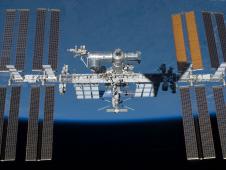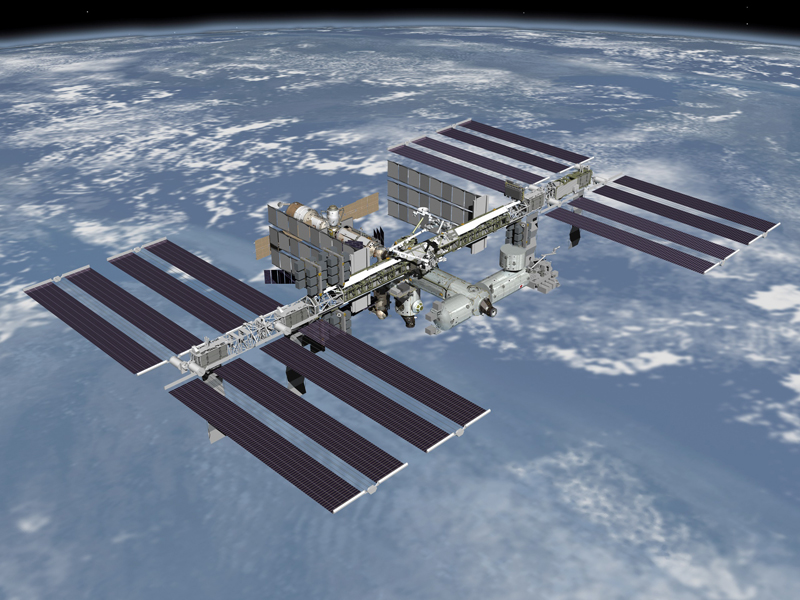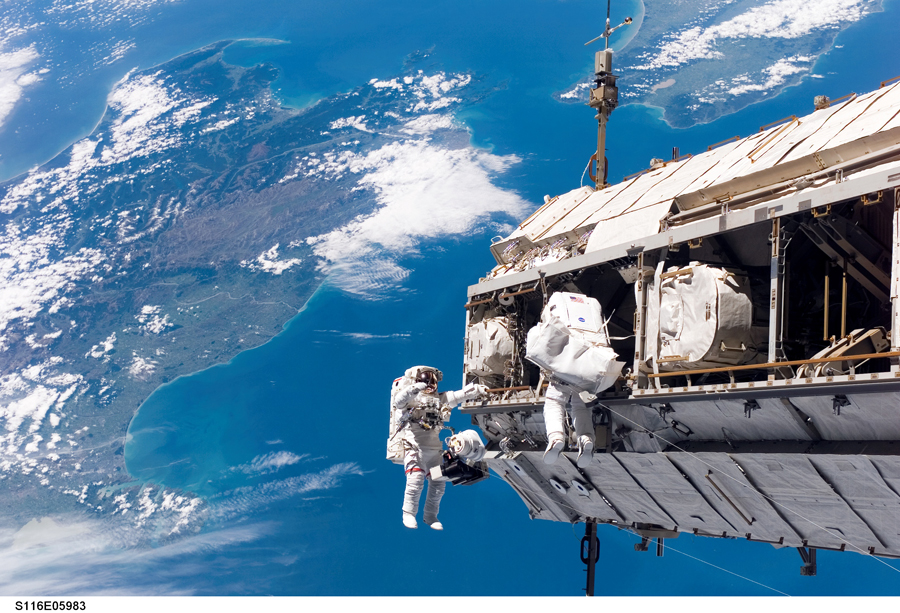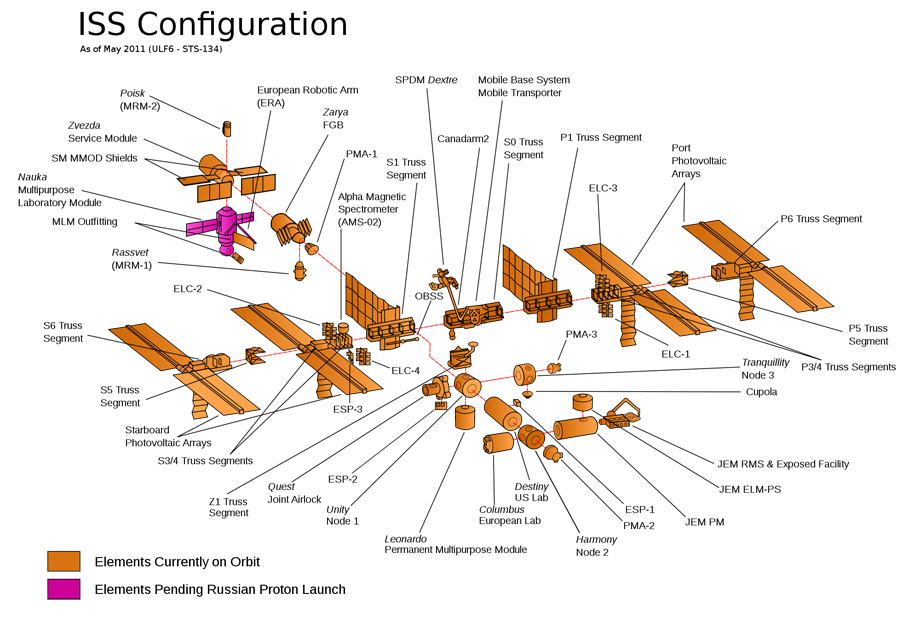International Space Station

Right now, somewhere above our heads, six (or so) astronauts are going about their daily lives in space living on the International Space Station (ISS). The astronauts that are on-board perform cutting edge scientific research within the confines of space in an environment that cannot be matched on Earth. For example, gravity alters the way that atoms come together to form crystals. In microgravity, near-perfect crystals can be formed. Such crystals can yield better semi-conductors for faster computers or for more efficient drugs to combat diseases.
But that's not all we are learning from them. During the construction phase of the ISS we learned about all of the issues related to assembling structures in a zero-gravity environment. Many tools had to be invented, such as battery powered tools. We also learned, and today we continue to evaluate, the difficulties associated with living in space for prolonged periods of time. The mundane things such as sleeping, eating, drinking, exercising and going to the toilet are all difficult in space. Understanding these issues is fundamental to any deep-space missions such as a manned journey to Mars.
Working Together
The ISS program is a joint project between five space agencies, NASA, the Russian RKA, the Japanese JAXA, the European ESA, and the Canadian CSA. Originally intended to be a laboratory, observatory and factory in space, as well as a to provide transportation, maintenance, and be a base for possible future missions to the Moon, Mars and asteroids, the 2010 United States National Space Policy further extended the role of the ISS to include serving commercial, diplomatic, and educational sectors.
Construction of the International Space Station began on 20 November 1998 when the American-funded, Russian-built Zarya module was launched into orbit around Earth. All other modules were delivered by the Space Shuttle, which required installation by ISS and shuttle crewmembers.
ISS Facts
The ISS has been continually inhabited since the first crew, Expedition 1, docked on Nov 2 2000. As of August 2011, there have been 135 launches to the space station since the launch of the first module. A total of 161 spacewalks have been conducted in support of space station assembly totaling more than 1,015 hours. The space station, including its large solar arrays, spans the area of a U.S. football field.
ISS Statistics:
- Module Length: 167.3 feet (51 meters)
- Truss Length: 357.5 feet (109 meters)
- Solar Array Length: 239.4 feet (73 meters)
- Mass: 861,804 lb (390,908 kilograms)
- Habitable Volume: 13,696 cubic feet (388 cubic meters)
- Pressurized Volume: 32,333 cubic feet (916 cubic meters)
- Power Generation: 8 solar arrays = 84 kilowatts
- Lines of Computer Code: approximately 2.3 million
The space station has a permanent crew of, typically, six astronauts. The ISS does not feature a shower, instead, crewmembers wash using a water jet and wet wipes, with soap dispensed from a toothpaste tube-like container. Crews are also provided with rinse-less shampoo and edible toothpaste to save water.
← Near Earth Programs Skylab Project →


